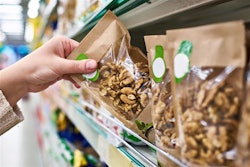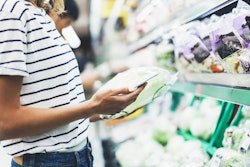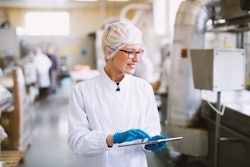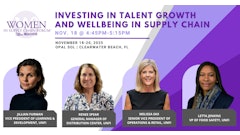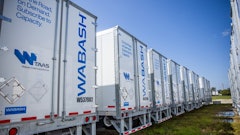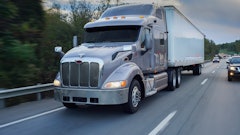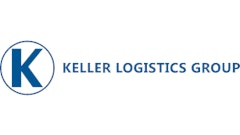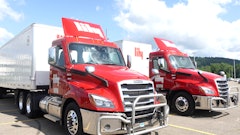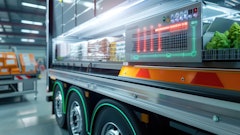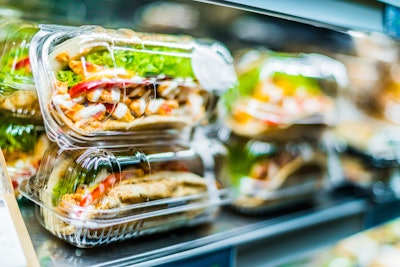
Foodservice is an integral aspect of the economy and food industry throughout the United States, making up $969.4 billion of the $1.77 trillion food industry in 2019, according to the United States Department of Agriculture’s Economic Research Service. And, third-party logistics companies (3PLs) work to provide the safe shipment of ingredients and products.
Throughout the past few years, 3PLs in foodservice dealt with many different obstacles and trends such as growth in digitization and labor shortages. Beginning in March, the new problem of the Coronavirus disease (COVID-19) arose and shook the world’s economy, possibly the foodservice sector the most. The foodservice industry may look very different post-pandemic, but prior to the outbreak, 3PLs’ job was to handle moving SKUs so that partner companies can focus on selling rather than the logistics details. Moving forward, this will remain the case, but in a much different landscape.
“In foodservice, their model is designed to around the 80/20 rule -- 80% of sales comes from 20% of SKUs,” says Todd Avery, chief executive officer, McLane Global. “3PL’s role is to help foodservice distributors manage the other 80% of those slower moving but necessary SKUs. At McLane Global, we not only store those slower moving SKUs, [but] we also manufacture and source those unique products. This comprehensive model relieves space, inventory control and capital tie up in inventory for our foodservice customers. With our strategically located warehouse and with our contracted transportation services, we are able to service all parts of the country within one service day, in most cases. This is the same process that we apply to our retail and e-commerce customers. We receive, store, manage inventory for, pack and ship for a variety of foodservice customers who don’t have the infrastructure in-house to do what McLane Global does.”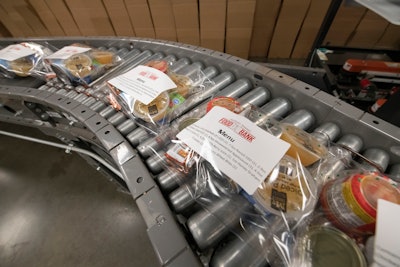 3PLs support foodservice enterprises amidst the Coronavirus pandemic.McLane Global
3PLs support foodservice enterprises amidst the Coronavirus pandemic.McLane Global
This decrease in infrastructure and interest in lowering costs pushes sellers to work with 3PLs.
“I feel that foodservice is moving toward the idea of using 3PLs more than ever,” says Mike Saoud, co-CEO of FreezPak Logistics. “To lower their cost of transportation and labor. This also lets our customer concentrate on what they do best…sell their products.”
A pandemic’s influence
Throughout the shelter-in-place orders that began in March and April, one of the hardest hit sectors was foodservice, as restaurants, schools and other forms of public gatherings where foodservice would be provided shut down. However, 3PLs and food distributors pivoted to serve the needs of the communities as well as keep business moving. In addition to moving more consumer facing, a great shift in product demands occurred.
“At the start of the pandemic, we saw a portion of our 3PL foodservice customers’ business go to zero with restaurants, schools and other foodservice outlets closing their doors,” says Avery. “However, not all foodservice sectors slowed. There was a sharp shift in demand to the medical and institutional customers, which we were well positioned to supply with gloves, masks, hand sanitizers and cleaners. We also experienced a rapid move from larger cafeteria-style prepared meals to individual, shelf-stable meals. Our experience with hunger relief organizations allowed us to almost immediately provide shelf-stable meal kit options to support these customers. This helped provide a distribution pipeline to get food out the door safely and quickly. You see similar practices with airlines.
“Once things began opening again, we saw business rapidly increase unexpectedly,” he adds. “Foodservice customers were finding new, unique avenues for business to supplement the loses in their traditional channels. Overnight, we saw roughly an immediate 50% rebound in volume. We have steadily seen that inching closer to pre-pandemic levels in recent months as some of the more traditional lines of business have opened back up.”
Numerous 3PLs and distributors determined new ways of business during and after the lockdown, with many varying approaches.
“McLane Global is unique in that we also with work numerous retailers across the country through our U.S. sales and manufacturing division,” Avery says. “So, when the core business for foodservice plummeted, our 3PL team partnered with our sales force to help our foodservice customers identify alternative opportunities - like retail and club channels - to keep business going. And, since we already store their products at our facilities, we were able to use our kitting teams to quickly work on new configurations to get our customers’ products out the door.”
While many distributors went straight to direct-to-consumer options, others worked with retailers to serve the food industry. Saoud explains that the 3PL shifted gears toward the retail sector, as it filled the gap left from foodservice during shutdowns. Meanwhile, others focused on the retail channel to support the shift in consumer needs, including McLane.
“Our 3PL customers knew they would need to adapt,” says Stacey Walker, director of logistics and technology, McLane Global. “Many of them shifted more into retail channels to respond to the growing consumer demand on shelf. We have worked with a number of our customers to repack in units that work well for club and retail channel accounts, allowing them to still do volume business while other traditional business channels recover.”
Technology evolution
Automation has been a beneficial investment throughout the pandemic, as social distancing requirements arrived, reducing the number of employees that can work in close relation.
For its part, FreezPak has invested in automation over the past few years, allowing it to focus on automated storage and retrieval systems, Saoud says. Moving forward, the 3PL plans to increase this focus on technologies in new facilities and recently upgraded software on the dock to decrease waiting times. Additionally, a labor shortage in existence before the pandemic pushes 3PLs toward automation even more.
“Labor has become a huge issue, especially in the cold storage space,” says Saoud. “The environment is just so tough to work in. This is why FreezPak has shifted gears toward automation.”
While COVID-19 opened many 3PLs' eyes up to the necessities of automation, it also revealed a need to diversify.
“Our foodservice customers saw their business stop overnight when Coronavirus hit,” says Walker. “With all the uncertainty in recent months, common concerns we’ve been managing are issues such as shelf life of product that would normally move at a much more predictable rate. 3PLs, like so many businesses today, really need to diversify and explore various avenues of business to better weather significant impacts such as those caused by the Coronavirus. When you have a deep, working understanding of how various channels of business work in logistics, you can actually present cross-channel opportunities to your customers and help them grow their business. That’s when you’re really building a partnership with your customers.”
If the Coronavirus outbreak subsides in the United States, the foodservice industry and its 3PLs will remain forever changed.
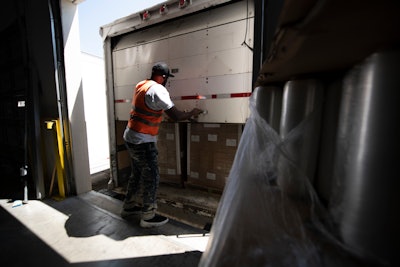 3PLs help foodservice distributors manage slower moving but necessary SKUs.McLane Global
3PLs help foodservice distributors manage slower moving but necessary SKUs.McLane Global
“Obviously, the pandemic has had a significant impact on foodservice customers,” says Avery. “I think this pandemic has exposed some real deficiencies and inefficiencies in the supply chain, and in foodservice in particular. I do not see the industry ever going back to their old practices. Some of the changes we expect to see are better inventory control, leaning more on 3PLs like McLane Global to mitigate the risk. I believe you will see a reduction in SKU variety and a shift to more private label products. And, I think you will see some new contracts that will require 3PLs to hold minimum stocks for foodservice distributors for future emergency purpose as an insurance policy. With all that said, we anticipate seeing the traditional channels come back to more normal levels as various areas of the country continue to reopen. What we predict moving forward will be a combination of that traditional business blended with the ongoing new channel opportunities, so our customers will be more diversified and more agile moving forward.”
As more foodservice areas open and the pandemic continues to subside, foodservice operators evolves and adapt to the new obstacles that arise. Automation grows within the logistics process and 3PLs become more prevalent. The sector still remains strong, but is greatly changed, with new priorities in focus for both distributors and 3PLs.





